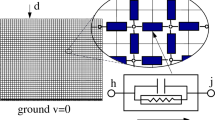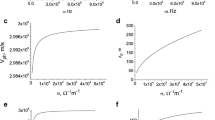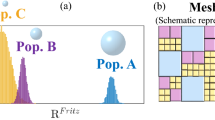Abstract
IN the original theory of Townsend, the discharge phenomena in the Geiger counter are explained on the assumption of ionization by electrons (α ions per cm.) followed by an ionization by positive ions (β ions per cm.). Later this theory, especially as a consequence of the fact that ionization by positive ions requires a high energy, was modified in such a way that the secondary process was considered to consist of electrons liberated from the cathode by photons from the primary avalanche (θηg photoelectrons from one field electron per cm. path). Both theories give analogous mathematical expressions for the sparking equation and for the current amplification in the homogeneous field between plane surfaces. Thus it is impossible to decide between the two possibilities.
This is a preview of subscription content, access via your institution
Access options
Subscribe to this journal
Receive 51 print issues and online access
$199.00 per year
only $3.90 per issue
Buy this article
- Purchase on Springer Link
- Instant access to full article PDF
Prices may be subject to local taxes which are calculated during checkout
Similar content being viewed by others
Author information
Authors and Affiliations
Rights and permissions
About this article
Cite this article
WERNER, S. Mechanism of the Geiger Discharge. Nature 165, 1018–1019 (1950). https://doi.org/10.1038/1651018d0
Issue Date:
DOI: https://doi.org/10.1038/1651018d0
This article is cited by
-
�ber die Entstehung eines Ausl�sebereiches in Z�hlrohren mit reiner Dampff�llung
Zeitschrift f�r Physik (1951)
Comments
By submitting a comment you agree to abide by our Terms and Community Guidelines. If you find something abusive or that does not comply with our terms or guidelines please flag it as inappropriate.



